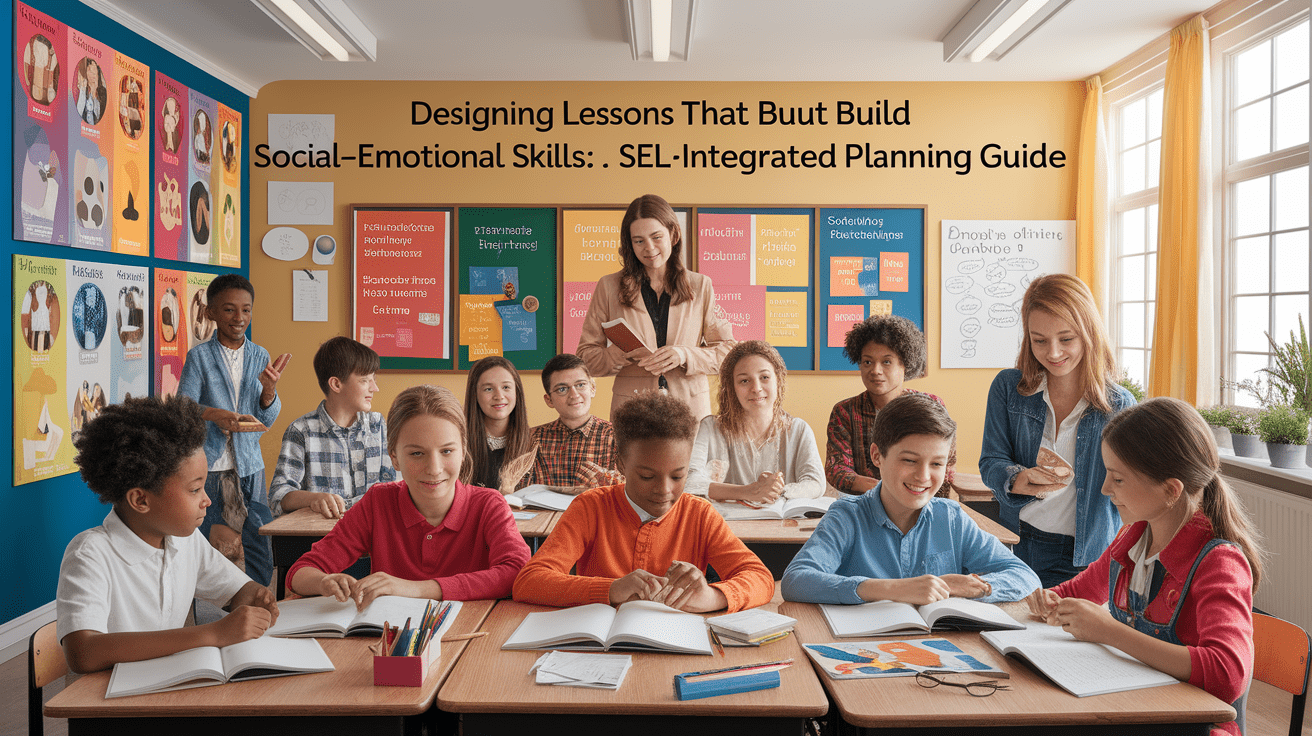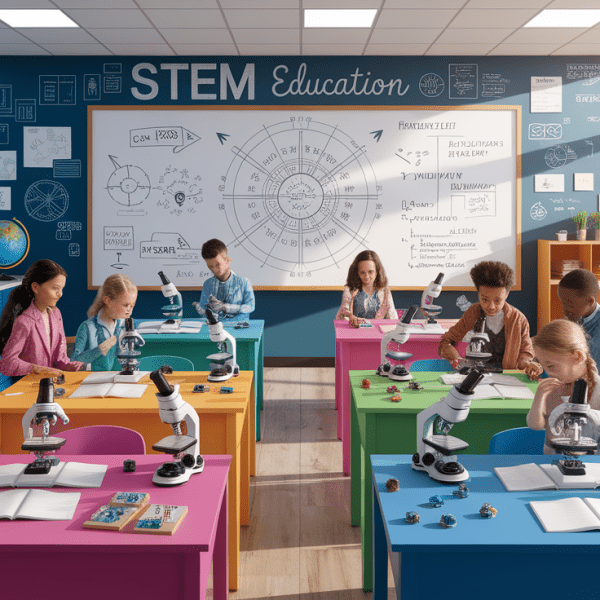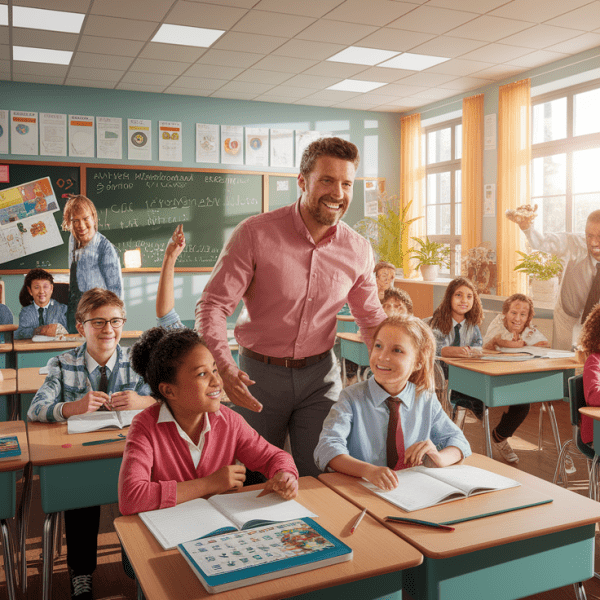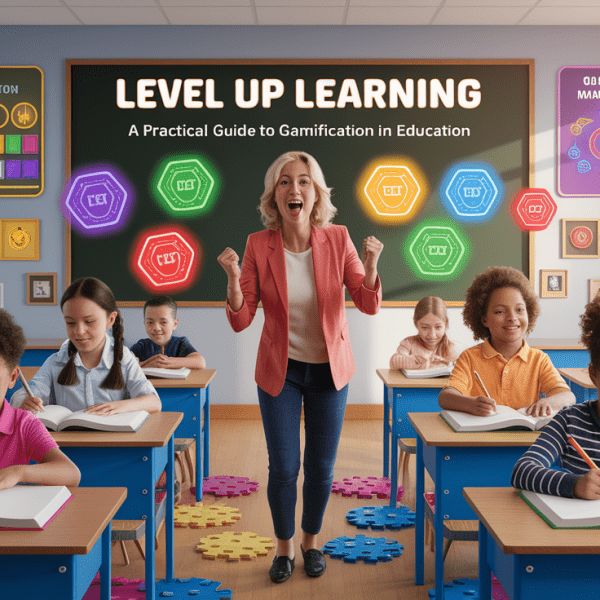Hey there, fellow educators! Let’s talk about one of the most powerful ways we can shape our classrooms: Social-Emotional Learning (SEL). We all know our job is about more than just teaching academics; it’s about nurturing well-rounded humans who are ready for the world. That’s where designing lessons that build both academic knowledge and social-emotional skills comes in. By weaving SEL into the fabric of our daily instruction, we create a vibrant classroom culture that supports student well-being and boosts academic success. Ready to dive in? Let’s build a plan!
Ignite SEL Learning from Day One
Social-Emotional Learning (SEL) is the process of developing the self-awareness, self-management, and interpersonal skills that are vital for success in school and life. When we talk about SEL, we’re focusing on five core competencies: self-awareness, self-management, social awareness, relationship skills, and responsible decision-making. These aren’t just “soft skills”; they are the foundational abilities that help students manage stress, build positive relationships, and make ethical choices.
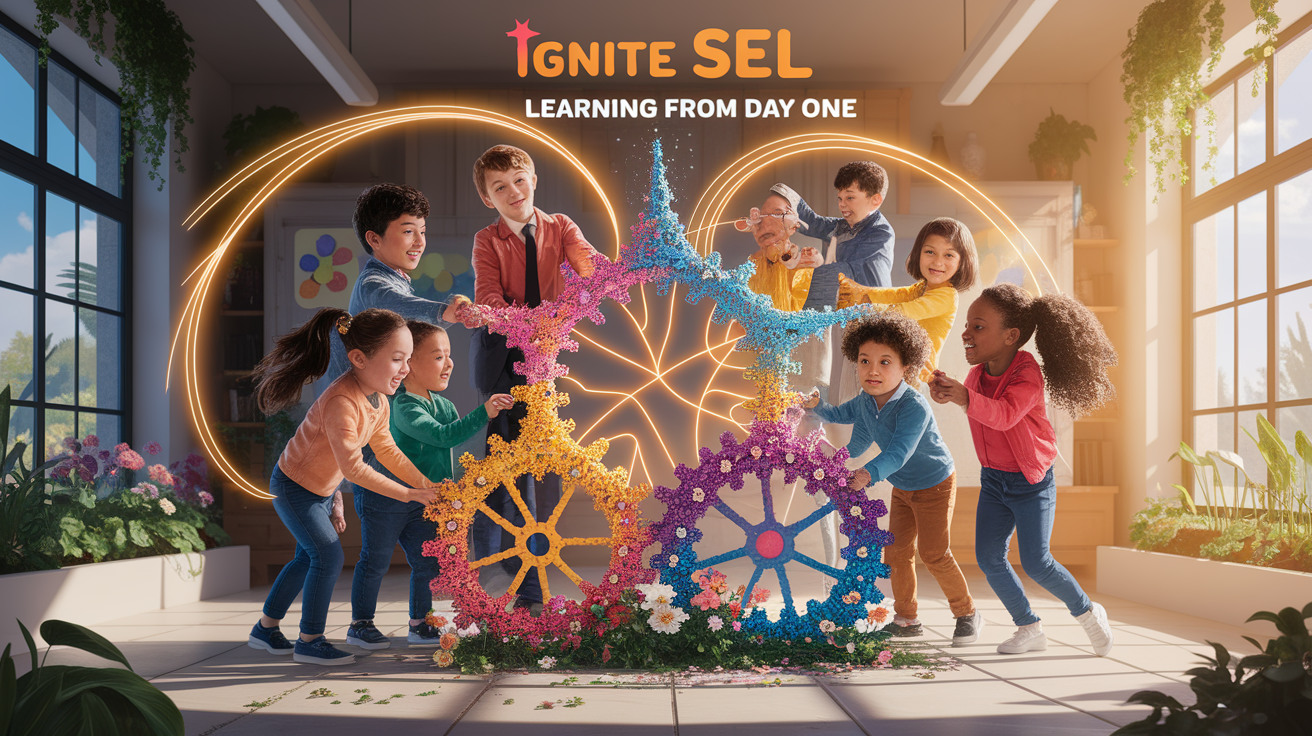
The magic happens when we stop seeing SEL as another thing to add to our plates and start seeing it as the plate itself. Effective SEL-integrated planning doesn’t mean a separate 30-minute block for “feelings.” It means intentionally designing lessons where students practice empathy during a literature discussion, use self-management to tackle a tough math problem, or exercise responsible decision-making in a science lab. By doing this, we create authentic learning experiences that reinforce both academic and emotional intelligence. For great examples of what this looks like, check out these sample lesson plans that fuse SEL with core subjects.
Mapping Core SEL Competencies to Learning Goals
The first step to seamless integration is to be intentional. Just as you plan for academic outcomes, you need to plan for SEL outcomes. This starts with understanding the five core competencies and thinking about how they connect to your existing curriculum.

- Self-Awareness: Understanding one’s own emotions, personal goals, and values.
- Self-Management: Regulating emotions, thoughts, and behaviors in different situations.
- Social Awareness: Showing understanding and empathy for others.
- Relationship Skills: Establishing and maintaining healthy relationships and communicating clearly.
- Responsible Decision-Making: Making caring and constructive choices about personal behavior and social interactions.
When you sit down to plan, ask yourself: “What SEL skill naturally fits with this academic topic?” For example, a history lesson on the Civil Rights Movement is a perfect opportunity to build social awareness and empathy. A group science project requires strong relationship skills and responsible decision-making. The key is crafting specific learning objectives that name both the academic and the SEL goal. An objective might sound like, “Students will be able to analyze the protagonist’s motivations (academic) by writing a journal entry from their perspective to practice empathy (SEL).”
A Practical Framework for SEL-Integrated Lesson Plans
Okay, so how do we actually build these magical, integrated lessons? It doesn’t have to be complicated! In fact, the process of designing effective lesson plans with an SEL focus can be broken down into a simple, four-step cycle. Let’s walk through it.

Step 1: Preparation
Before you even think about the lesson’s activities, think about your students. What are their interests, strengths, and cultural backgrounds? A strong SEL classroom is an equitable one. Taking the time to build culturally responsive lesson plans ensures that every student feels seen and valued, creating a safe environment where they can practice social-emotional skills. Identify the key academic goal and then pinpoint one or two SEL competencies that you want to target.
Step 2: Lesson Planning
Now it’s time to design the experience. This is where you map out the activities, discussions, and instructional practices that will bring your academic and SEL goals to life. Remember to build in opportunities for students to *practice* the skills. Don’t just tell them to be empathetic; give them a task that requires it! For a fantastic, detailed guide with guiding questions, the SEL-Academic Integration Lesson Planning Template from OSPI is an invaluable resource.
Step 3: Execution
It’s showtime! As you implement the lesson, your own social-emotional skills are on full display. Model the patience, empathy, and positive communication you want to see from your students. Be prepared to guide conversations, manage group dynamics, and create a supportive atmosphere. Your ability to model these competencies is one of the most powerful teaching tools you have.
Step 4: Reflection
Once the lesson is over, take a moment to breathe and reflect. How did it go? Did the students engage with the SEL skill? What worked and what could be tweaked for next time? This reflection is crucial for refining your practice and understanding what additional support your students might need on their SEL journey.
Instructional Strategies to Cultivate SEL Skills
Looking for fun and engaging ways to bring SEL to life in your classroom? The possibilities are endless! The best effective instructional strategies are often the ones you already use, just with an intentional SEL twist.

- Think-Pair-Share: A classic for a reason! This strategy is fantastic for developing relationship skills like active listening and respectful communication.
- Journaling or “Rose, Bud, Thorn”: Give students a few minutes to write or draw. A “Rose, Bud, Thorn” check-in (a highlight, something they’re looking forward to, and a challenge) is a wonderful tool for building self-awareness and self-management.
- Role-Playing Scenarios: Act out common classroom conflicts or challenging situations. This helps students practice problem-solving, social awareness, and responsible decision-making in a safe, low-stakes environment.
- Collaborative Projects: Group work is a natural laboratory for SEL. Set clear expectations for communication, shared responsibility, and conflict resolution to build relationship skills.
- Fishbowl Discussions: Have an inner circle discuss a topic while an outer circle observes and provides feedback on communication and listening skills. This is excellent for fostering social awareness.
Remember to lean on the principles of Universal Design for Learning (UDL) to ensure your SEL activities are accessible and engaging for all learners. Providing choices in how students express themselves can empower them to engage more deeply with their emotional learning.
Assessing and Reflecting on SEL Growth
Assessing social-emotional learning isn’t about giving a grade on kindness. It’s about observing growth, providing feedback, and helping students recognize their own progress. The most important assessment tool is your own reflection and observation.
After a lesson, use a simple checklist or a few guiding questions to reflect on what you saw. The CASEL checklist can help you identify where SEL is already happening. Ask yourself:
- How did students participate in the collaborative parts of the lesson?
- Did I see examples of students using the target SEL competency?
- What adjustments can I make to provide more opportunities for practice next time?
These reflective practices are essential for enhancing students’ skill development. You can also use student self-reflections, like exit tickets asking “How well did you listen to your partner today?” or “What was one challenge you managed during this activity?” This empowers students to build self-awareness about their own emotional intelligence.
Overcoming Challenges in SEL Integration
Let’s be real—integrating something new can feel daunting. You might worry about finding the time, handling sensitive conversations, or not feeling like an expert yourself. That’s completely normal! Here are a few encouraging reminders:
- Start Small. You don’t have to overhaul your entire curriculum overnight. Pick one lesson a week to focus on with an intentional SEL goal. Small, consistent steps build a strong classroom culture over time.
- You’re Not Alone. Collaborate with your colleagues! Share what works, brainstorm ideas, and support each other. Resources are also your best friend. Edutopia offers fantastic, practical advice for getting started and navigating tricky topics.
- Integrate, Don’t Add. Look for the natural connections that already exist in your lessons. SEL isn’t one more thing to do; it’s a new lens through which to do the things you’re already doing.
Empowering Futures Through SEL-Infused Lessons
Ultimately, designing lessons that build social-emotional skills is one of the greatest gifts we can give our students. By weaving SEL into our daily instruction, we’re not just creating a more positive and productive classroom culture—we’re equipping students with the emotional intelligence, resilience, and empathy they need to thrive. These skills will serve them long after they’ve forgotten the formula for a quadratic equation or the date of a historical battle.
So take a deep breath, pick one small step, and start planning. You’ve got this! By focusing on student well-being, you are empowering a future generation of thoughtful, capable, and compassionate individuals.

